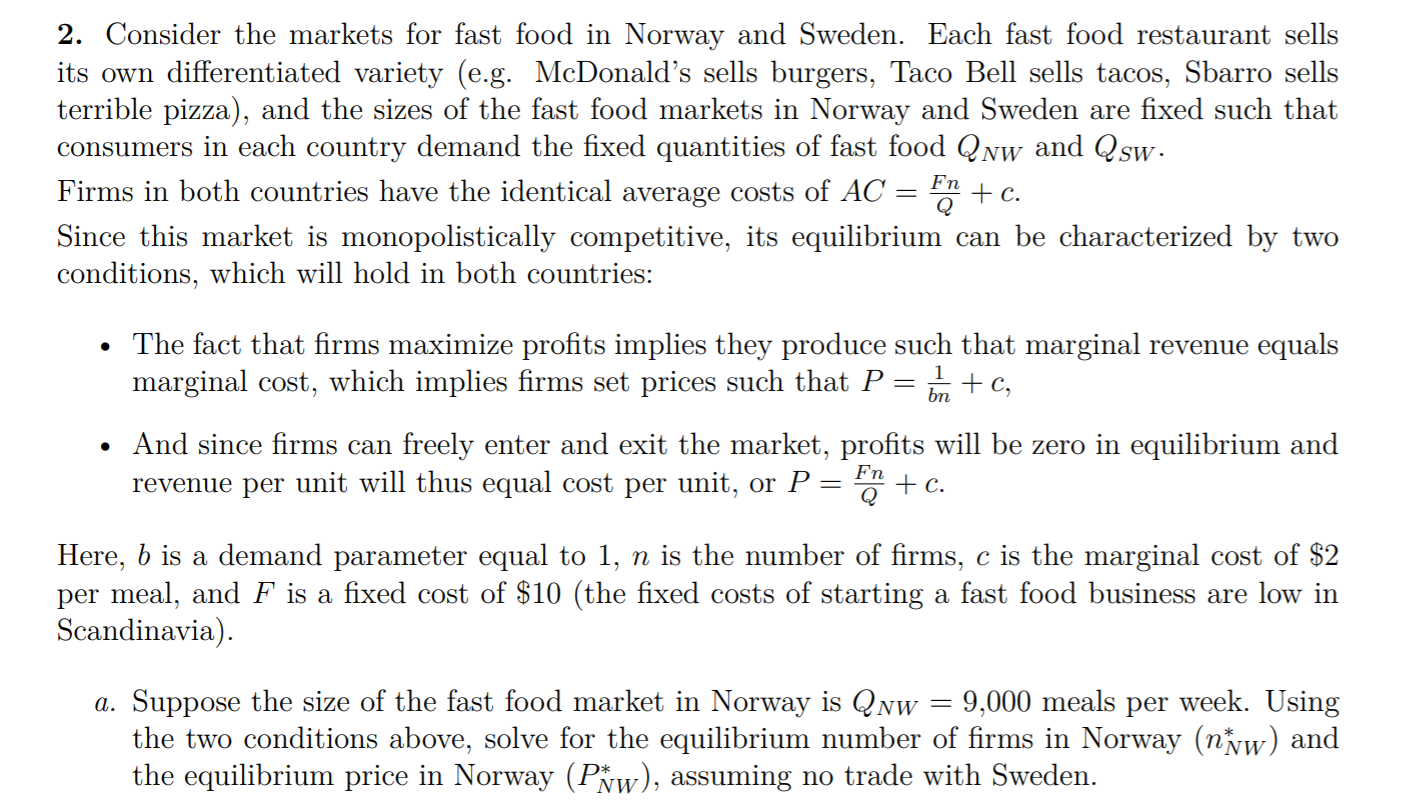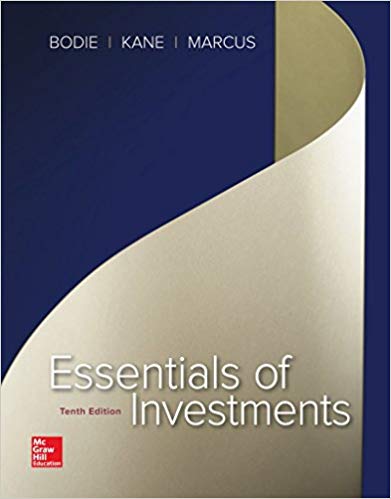

2. Consider the markets for fast food in Norway and Sweden. Each fast food restaurant sells its own differentiated variety (e.g. McDonald's sells burgers, Taco Bell sells tacos, Sbarro sells terrible pizza), and the sizes of the fast food markets in Norway and Sweden are fixed such that consumers in each country demand the fixed quantities of fast food Qnw and Qsw. Firms in both countries have the identical average costs of AC +c. Since this market is monopolistically competitive, its equilibrium can be characterized by two conditions, which will hold in both countries: = Fn Q The fact that firms maximize profits implies they produce such that marginal revenue equals marginal cost, which implies firms set prices such that P = +c, And since firms can freely enter and exit the market, profits will be zero in equilibrium and revenue per unit will thus equal cost per unit, or P = m + c. Here, b is a demand parameter equal to 1, n is the number of firms, c is the marginal cost of $2 per meal, and F is a fixed cost of $10 (the fixed costs of starting a fast food business are low in Scandinavia). a. Suppose the size of the fast food market in Norway is Qnw = 9,000 meals per week. Using the two conditions above, solve for the equilibrium number of firms in Norway (nuw) and the equilibrium price in Norway (Pxw), assuming no trade with Sweden. b. Suppose the size of the fast food market in Sweden is Qsw = 16,000 meals per week. Solve for the equilibrium number of firms in Sweden (now) and the equilibrium price in Sweden (P$w), assuming no trade with Norway. c. Suppose Norway and Sweden open up their fast food markets, which creates an integrated market between the two countries of size QTotal Qnw + Qsw = 25,000. Solve for the equilibrium number of firms in this integrated market (n*) and the equilibrium price (P*). d. What is the effect of trade on the price of fast food? What was the effect of trade on the total number of firms, and thus the number of fast food varieties available to consumers? 2. Consider the markets for fast food in Norway and Sweden. Each fast food restaurant sells its own differentiated variety (e.g. McDonald's sells burgers, Taco Bell sells tacos, Sbarro sells terrible pizza), and the sizes of the fast food markets in Norway and Sweden are fixed such that consumers in each country demand the fixed quantities of fast food Qnw and Qsw. Firms in both countries have the identical average costs of AC +c. Since this market is monopolistically competitive, its equilibrium can be characterized by two conditions, which will hold in both countries: = Fn Q The fact that firms maximize profits implies they produce such that marginal revenue equals marginal cost, which implies firms set prices such that P = +c, And since firms can freely enter and exit the market, profits will be zero in equilibrium and revenue per unit will thus equal cost per unit, or P = m + c. Here, b is a demand parameter equal to 1, n is the number of firms, c is the marginal cost of $2 per meal, and F is a fixed cost of $10 (the fixed costs of starting a fast food business are low in Scandinavia). a. Suppose the size of the fast food market in Norway is Qnw = 9,000 meals per week. Using the two conditions above, solve for the equilibrium number of firms in Norway (nuw) and the equilibrium price in Norway (Pxw), assuming no trade with Sweden. b. Suppose the size of the fast food market in Sweden is Qsw = 16,000 meals per week. Solve for the equilibrium number of firms in Sweden (now) and the equilibrium price in Sweden (P$w), assuming no trade with Norway. c. Suppose Norway and Sweden open up their fast food markets, which creates an integrated market between the two countries of size QTotal Qnw + Qsw = 25,000. Solve for the equilibrium number of firms in this integrated market (n*) and the equilibrium price (P*). d. What is the effect of trade on the price of fast food? What was the effect of trade on the total number of firms, and thus the number of fast food varieties available to consumers








